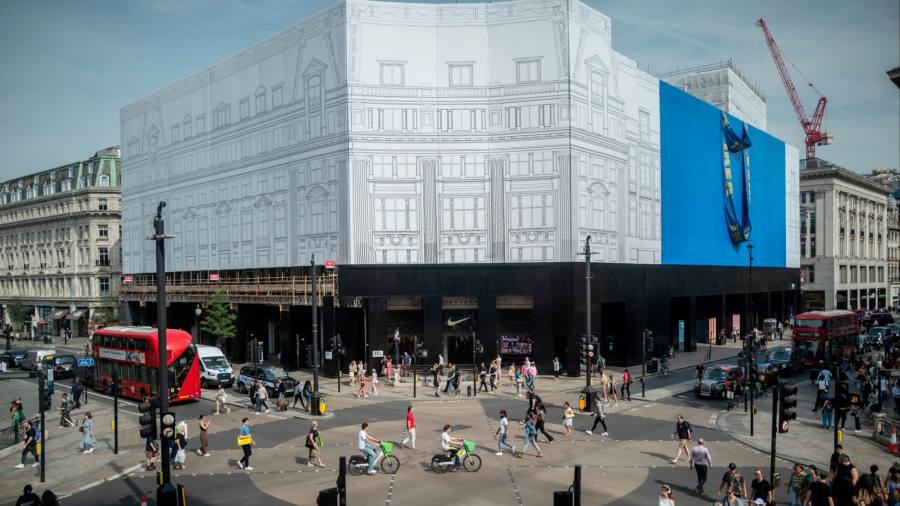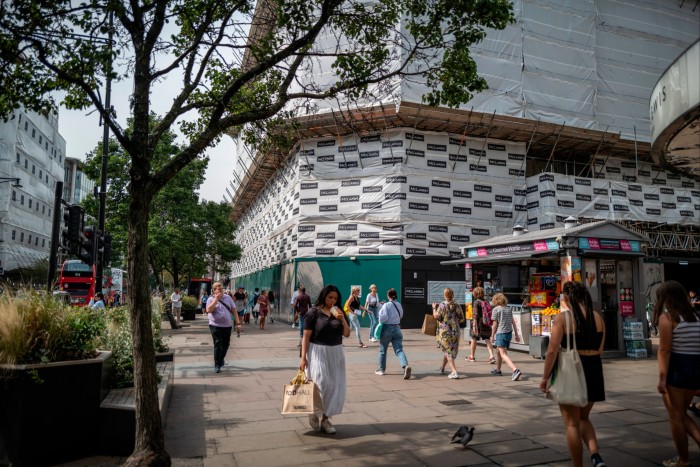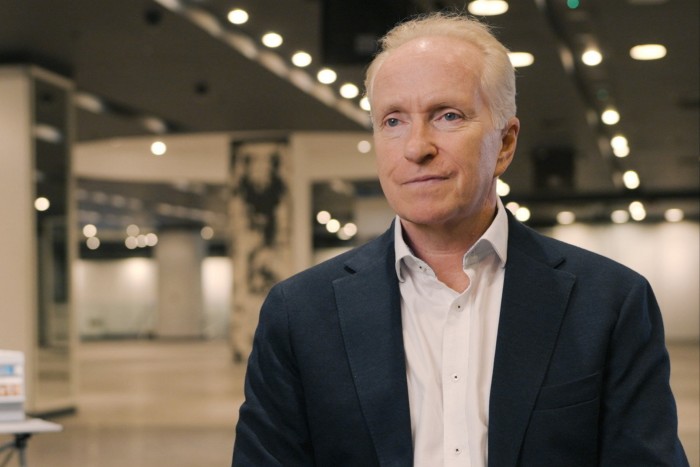
Receive free UK retail industry updates
We’ll send you a myFT Daily Digest email rounding up the latest UK retail industry news every morning.
As eager shoppers bustle about outside, works are under way inside 500 Oxford Street in London’s West End, close to discount chain Primark and the flagship UK stores of retailers Marks and Spencer, and Selfridges.
Mark Vlassopulos, founder and chief executive of Pocket Planet, has leased more than 30,000 sq ft in the capital’s busiest shopping destination to build Britain’s biggest indoor miniature world, a modelling attraction.
The 63-year-old is confident the space will draw 1mn more people a year to the retail district when fully open in 2025. “We hope we’re providing generative momentum rather than just a kind of parasitic one,” he said.
Pocket Planet’s £15mn investment and commitment to a 25-year lease come as Westminster city council and other tenants aim to revive one of Europe’s best-known shopping streets, which some retail sector figures say is in terminal decline.
In March, 42 of Oxford Street’s 269 stores, or almost 16 per cent, were vacant — up from 4.3 per cent in 2019 and higher than the average for high streets in London and across Britain, according to figures from the Local Data Company.
The demise of iconic department stores such as Debenhams and House of Fraser has been swiftly followed by a surge in sweet and souvenir shops, as well as a slow recovery in domestic and international visitor numbers since the Covid-19 pandemic.
“If you walk the length of Oxford Street, it’s a national disgrace,” said Richard Pennycook, who previously chaired nearby department store Fenwick and ran the Co-op supermarket chain. “It’s been falling apart for the last 10 years.”
Oxford Street’s travails, which are mirrored across the UK’s hollowed-out high streets, are borne out by lacklustre visitor numbers. Footfall is still one-fifth lower than before Covid, according to the New West End Company, which represents businesses in the area and declined to provide an absolute number.
Rival streets in Europe are meanwhile racing ahead. Despite an average of 1.42mn people visiting Oxford Street each month, Paris’s Avenue des Champs-Élysées, Amsterdam’s Leidsestraat and Via del Corso in Rome all registered a bigger rebound in footfall in the year to May 2022, data provider MyTraffic found.
Since 2021, London has been an outlier in Europe in not offering tax-free shopping, a move criticised by retail industry executives. More recently, the West End has become a flashpoint in a wider debate over decarbonising the economy after communities secretary Michael Gove blocked Marks and Spencer from rebuilding its Art Deco flagship.
The retailer, which last month launched a legal challenge against Gove’s move, said at the time that his “utterly pathetic” decision may lead it to quit the “national embarrassment” of Oxford Street altogether.
Geoff Barraclough, cabinet member for planning and economic development at Westminster city council, which approved M&S’s redevelopment plans, said that even before the pandemic, Oxford Street was in a “secular decline” as big names went bust and consumers sought out more experiences and bought more online.

Although it cannot force them out, Barraclough added that the council had been working with landlords to cut the number of sweet shops, which remained open during pandemic lockdowns because of tax holidays on property and by arguing they were food stores.
Dee Corsi, NWEC chief executive, rejected the idea that Oxford Street was condemned.
“We should not confuse the challenging macroeconomic environment facing developments across the country with the overall desirability of Oxford Street . . . Behind the hoardings is a story of radical regeneration,” she said.
A flurry of planned openings backs this up. Music store HMV will return to its flagship site in time for Christmas, while Ikea, the furniture retailer, will next year launch a store in the former Topshop building on Oxford Circus.
Cosmetics seller Rituals and shoe shop Kurt Geiger have leased space, and some brands already present on the one-mile strip are expanding. Pandora, the world’s biggest jeweller, last month opened its third and largest store, while Poland-based fashion brand Reserved is also due to take a second site.
In a sign of how new tenants are diversifying away from retail, crazy golf business Swingers is to be found in the building formerly occupied by retailer BHS, while Moco, a modern art museum, is awaiting a planning permission to open its third European gallery.
Part of the change is also a £100mn redevelopment led by the council and NWEC, which includes wider pavements, more trees and places to rest, new street lighting and making Oxford Street more accessible.

The council is on Monday expected to formally approve the business case for the regeneration, which Barraclough said would dynamise the district’s offering. If the transformation is successful, it could become a blueprint for other high streets across Britain, where store closures have slowed in the past year.
Pocket Planet’s Vlassopulos, who is enthusiastic about his company’s London launch, welcomed the £100mn project but insisted the onus was on existing tenants to change the face of Oxford Street by refurbishing stores and refining their offering.
“At the moment, it all looks a bit random, it’s run down,” he said. “The tenants have to do a better job, which means . . . looking better, serving a better product, and hopefully we fit into that next wave.”

